’77 hours of sheer hell’
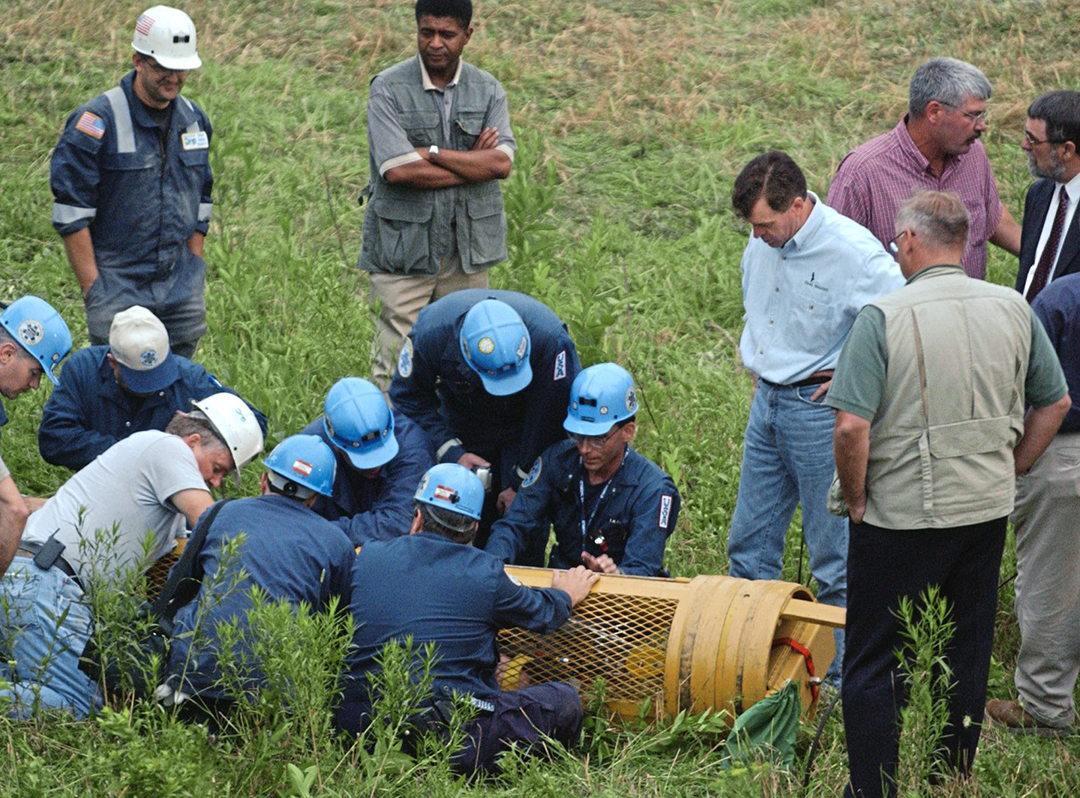
Former Pennsylvania Gov. Mark Schweiker says Quecreek rescue proof miracles do happen
Story by PAUL PEIRCE
Tribune-Review
July 24, 2022
Twenty years ago this week, Gov. Mark Schweiker stepped to a podium in an abandoned Somerset County grocery store converted to a makeshift media center, pumped both fists in the air and proclaimed that against all odds, nine men trapped 240 feet underground for 77 hours had been rescued from the Quecreek Mine.
“Nine for nine!” he exclaimed, as applause from the crowd melded with gasps of joy and tears of relief on that steamy summer night, July 27, 2002.
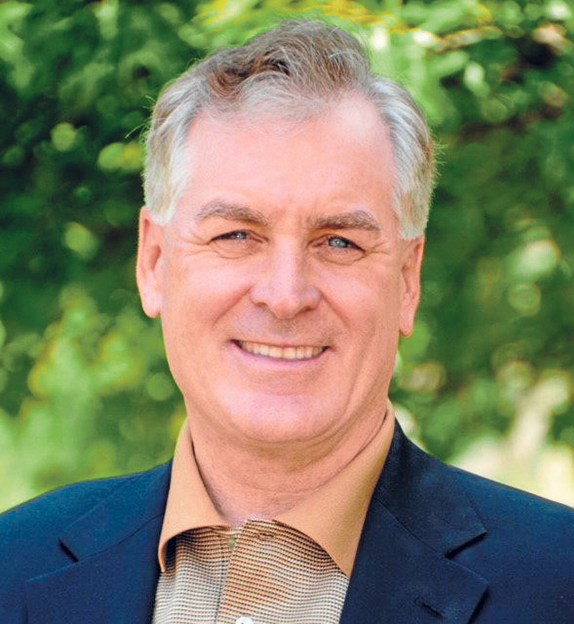
Former Pennsylvania Gov. Mark Schweiker as seen on June 8, 2022. (Courtesy of LaTorre Communications)
Photos of the jubilant Schweiker have become almost as iconic as those of the shivering, grimy miners being lifted to safety in the yellow steel cage as hundreds of exhausted rescuers crowded around them, clapping and thanking God that the life-and-death decisions made during the ordeal paid off.
In those 77 hours, Schweiker, dressed in what would become his trademark blue shirt and jeans, became the face of a made-for-Hollywood story that gripped a world desperate for a miracle just 10 months removed from the Sept. 11 terrorist attacks.
“While many believe miracles only occur in fiction, I saw it first-hand. I experienced it in real life during 77 hours of sheer hell,” said Schweiker, now 69.

Still humble
Two decades after that miracle was delivered, Schweiker remains uncomfortable being praised for his role at Quecreek.
He believes that credit rests with the battlefield decisions made by local, state and federal rescue teams and the miners whose “gutsy spirit” helped them survive.
“The rescue team put everything they had into it,” said Schweiker, who served as lieutenant governor for seven years before Gov. Tom Ridge was tapped in October 2001 to become the nation’s first Homeland Security chief. “Just the energy level and the drive of the rescue team … the drillers, volunteers, the engineers, federal contingent, my own team … it was an intoxicating atmosphere. We all knew it was a life-and-death situation.”
“No one departed. Everybody wanted to stay on and do their best. And there was just an energy level and focus over 77 hours on their part that I’ll never forget.”
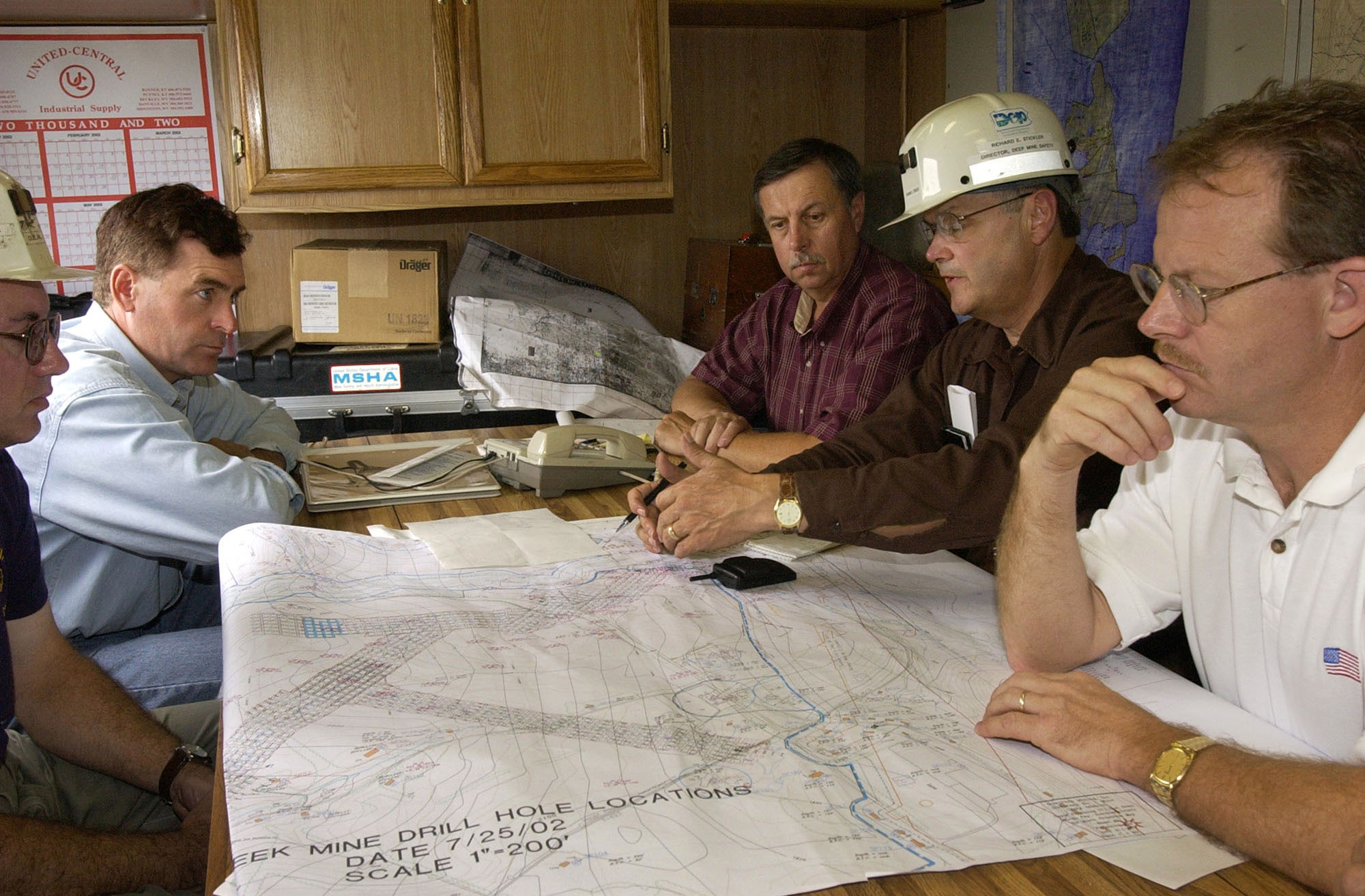
Looking back
Schweiker was on vacation when the call came in about the accident, which occurred shortly before 9 p.m. July 24.
The outlook was grim.
When the wall of an abandoned coal seam was accidentally breached, 72 million gallons of 55-degree water poured in, rising to the level of the miners’ chins. With only a small air pocket and the threat of hypothermia setting in, their chances of survival were poor, he was told.
“From my standpoint, we were going to do everything we could technically, mechanically and intellectually to rescue them.”
— Former Pa. Gov. Mark Schweiker
While rushing to the site, he said, experts warned him that these accidents often resulted in “recoveries rather than rescues.”
“We were going to cast aside history. My message was everybody’s got to push and move quickly to get it to work,” Schweiker said. “From my standpoint, we were going to do everything we could technically, mechanically and intellectually to rescue them.”
He was driven by the miners’ families and the desperate looks on their faces. He said he’ll never forget those looks.
“The spouses, brothers, sisters, mothers and fathers of these miners were wondering whether their loved ones would ever return home,” Schweiker said.
When he first arrived at the site, staffers wanted him to head to the mine to be briefed about the rescue. But Schweiker insisted that his first stop be at the nearby Sipesville Fire Hall where the families were waiting, according to then-state Department of Environmental Protection Secretary David Hess.
Once there, he talked one-on-one with each family, promising that everything in his power would be done to save their loved one.
It was a promise he hoped he could keep.
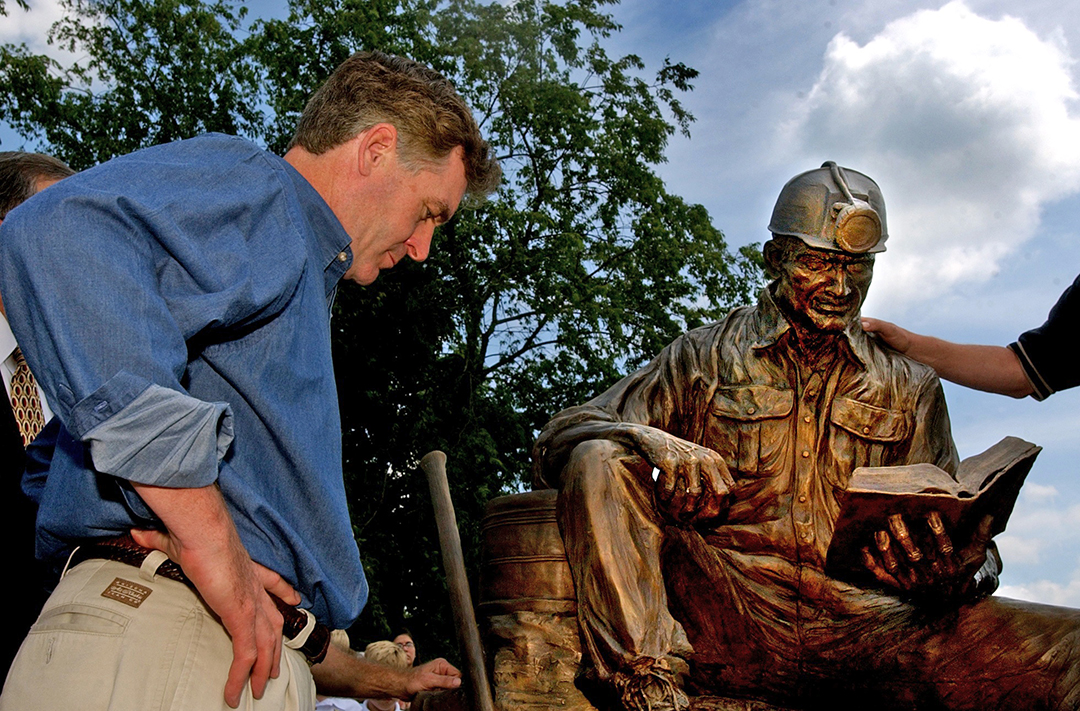
Prepared for the moment
Little did he know it, but Schweiker spent years preparing for the Quecreek disaster.
For the seven years that he served as lieutenant governor, he was chairman of the state Emergency Management Council, so he already spoke the language of crisis management. Prior to that, he was a Bucks County commissioner who worked closely with first responders.
As governor, if the rescuers needed something, he had the power to get it — immediately, with no bureaucratic red tape.
Related story
Schweiker remembers a call he made to West Virginia Gov. Bob Wise about a large truck carrying a crucial piece of specialized mine equipment that was parked in West Virginia.
He asked Wise for a West Virginia State Police escort to the border, where Pennsylvania state troopers would meet it and accompany it to Quecreek.
“Afterward, I heard from people who saw the truck that night and said they never knew such a large truck could move so fast,” he joked.
During those long days and nights, Schweiker popped up everywhere — tending to the families, regularly briefing the hordes of reporters from around the world, consulting with his staff and technical experts, and supporting the weary rescue workers.
He seldom rested, grabbing a few hours of sleep when and where he could.
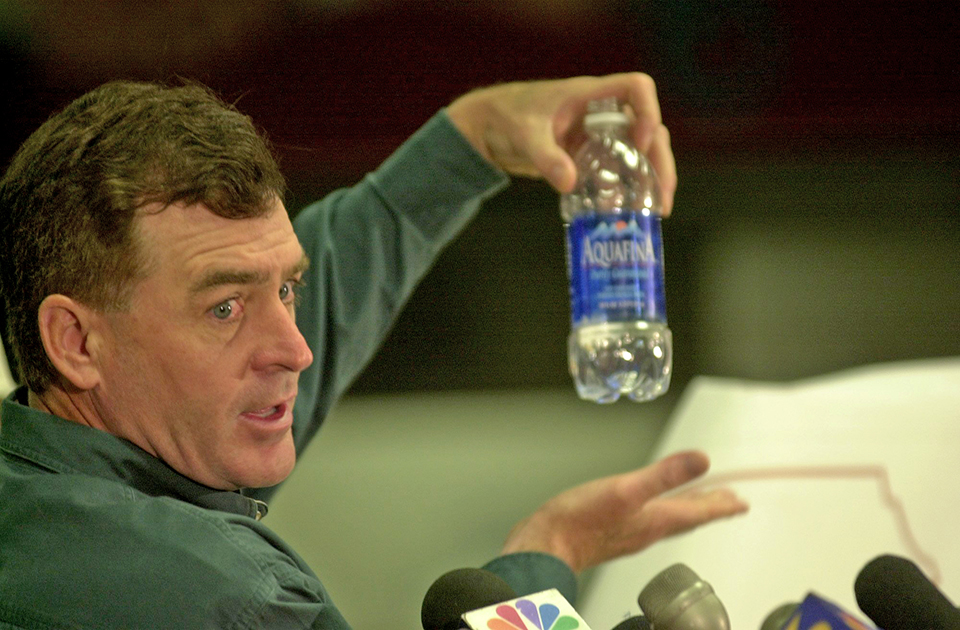
A breakthrough
The rescuers’ hopes that someone was alive inside the mine were realized July 25 when a 6-inch-wide air shaft was drilled and an air compressor turned on to blow heated air into the miners’ space.
“The miners tapped on that pipe nine times, which in miner’s code is, “Hey, there are nine of us down here,” Schweiker said.
“That’s all we needed, so we moved ahead, as fast as we could,” he said. “We were thinking, praying, we could catch a couple breaks and pull them up, and then it actually occurred.”
Two days later, late Saturday night, July 27, the rescue drill broke through to the miners.
“Frankly speaking, Saturday was among the highest-anxiety moments,” Schweiker said. “We were buoyed when water did not come flying up back through that rescue shaft. That was definitely a hallelujah moment, a relief we wouldn’t be dealing with drowning deaths due to concerns about air pressure.”

Freedom
One of the trapped miners said Schweiker was one of the first people he saw after being pulled above ground.
“We talked about the governor (while trapped), who the governor was in Pennsylvania. We didn’t know anymore because Tom Ridge took over Homeland Security, and we didn’t know who Mark Schweiker was,” said miner John Unger, 72, of Conemaugh Township.
“I was just pulled out on this stretcher, and all of a sudden this big hand comes in and he says, ‘Hi, I’m Mark Schweiker, governor of Pennsylvania.’ I looked at him and said, ‘We were just talking about you. We didn’t know who you were,’ ” Unger said, recalling with a laugh.
Although Schweiker months earlier had decided not to run for governor, Unger said he believes Schweiker easily could have run, won and been an outstanding governor.
“(Schweiker) was a great guy. He was a really genuine guy,” Unger said. “He wasn’t a politician. He was just genuine.”
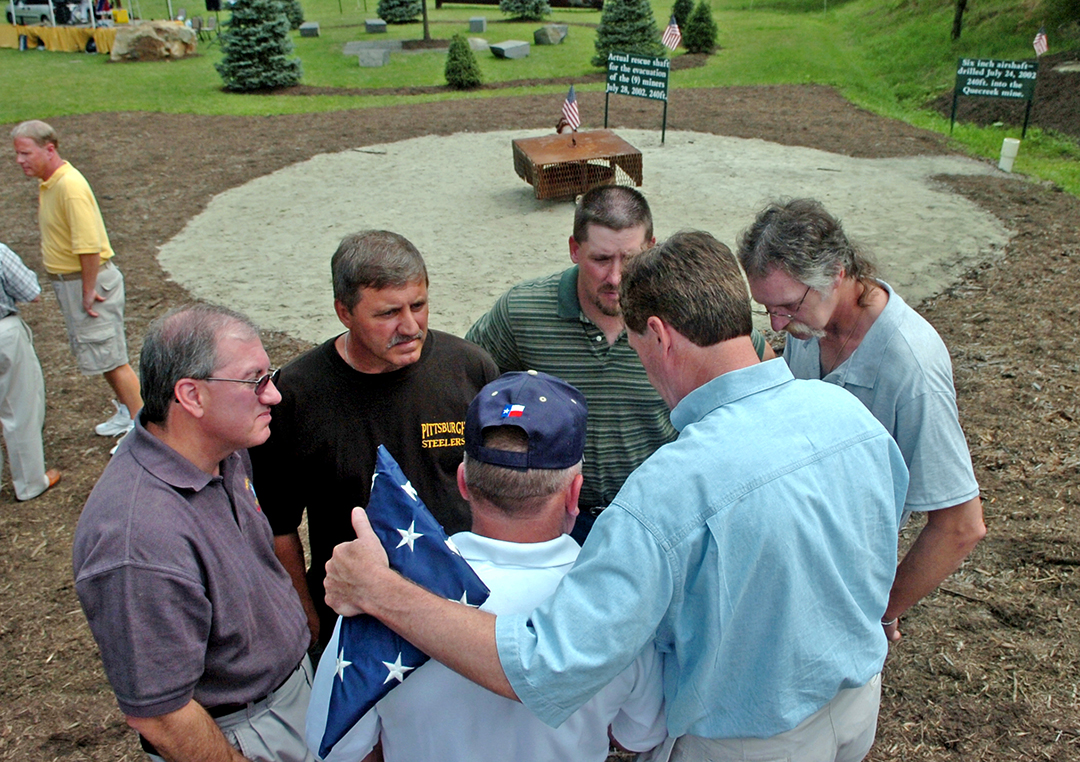
Former Pa. Gov. Mark Schweiker visits with several survivors of the Quecreek mine disaster on July 28, 2007, during a celebration of the fifth anniversary of the mine rescue near Somerset. Seen with Schweiker(clockwise from his left) are Tom Foy, Department of Environmental Protection official Joseph A. Sbaffoni, Robert Pugh, Blaine Mayhugh and Dennis Hall. (Tribune-Review file)
In the days that followed, Schweiker — and his blue shirt and jeans — became synonymous with the rescue.
There were TV interviews, an appearance on the “Tonight Show with Jay Leno,” his portrayal in books and a movie about the rescue, but he quickly deflects all of that attention to whom he described as the real heroes — the miners and rescuers.
As for that blue shirt, Schweiker said it’s the only one he had with him when he dashed to Somerset County that Friday. When his wife called him at 5 a.m. that Saturday, she wished him luck and said, “One other thing, you should think about changing that shirt.”
“I do have a great sense of kinship with those miners. … It’ll be kind of a family reunion. We’ll have a couple beers and a lot of laughs.”
— Former Pa. Gov. Mark Schweiker
Following her orders, Schweiker and his press secretary tried to find a store where he could buy a shirt. They ran into a woman and her son.
The woman told him he was doing a great job at Quecreek but said, “you really should change that shirt.”
Schweiker jokingly swore that someone put her up to it.
Bill Arnold, a farmer who serves as executive director of the nonprofit Quecreek Mine Rescue Foundation, said the blue shirt and still-muddy Florsheim dress shoes that Schweiker wore remain on display in a small museum the foundation operates at the rescue site.
Schweiker went on to become president and CEO of the Greater Philadelphia Chamber of Commerce and now does consulting work for several Eastern Pennsylvania firms. As in years past, he traveled to Western Pennsylvania to mark the 20th anniversary of the rescue.
“I do have a great sense of kinship with those miners. Who ever would have predicted a guy from Eastern Pennsylvania would wind up helping guide a rescue of miners in Western Pennsylvania. … It’s quite a nexus,” he said.